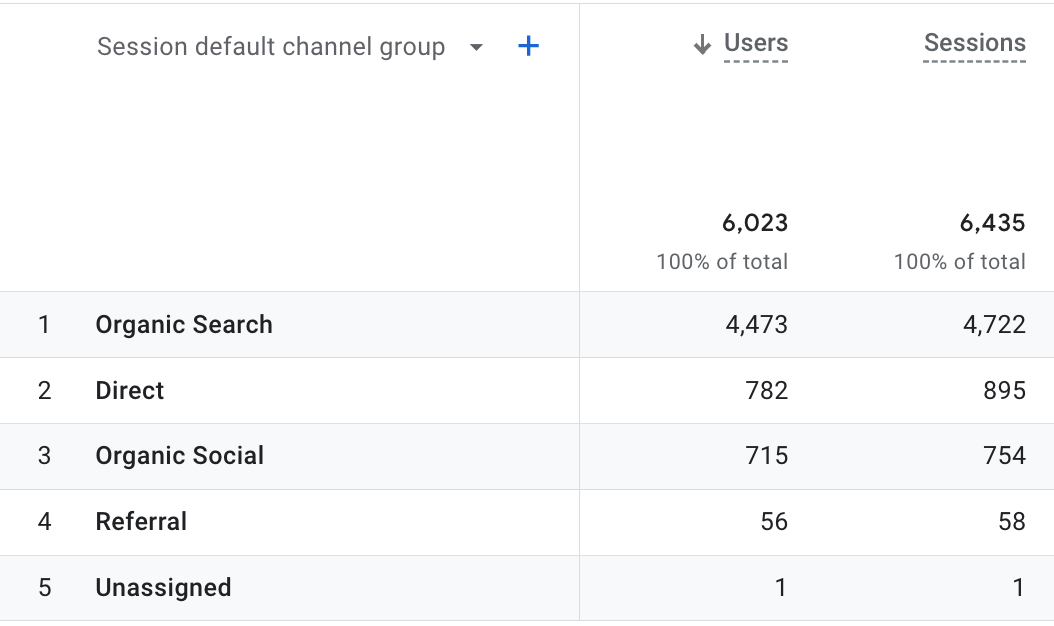Deciphering the Significance of Second Dimension in Google Analytics: Everything About Its Importance and Influence
In the world of digital analytics, the utilization of additional dimensions within Google Analytics works as a critical device for discerning deeper layers of information understandings. The value of additional measurements lies in their capacity to offer a nuanced view of individual behavior and communication with an internet site or platform. By studying information beyond surface-level metrics, organizations can unlock a wealth of details that improves and forms critical choices advertising and marketing initiatives. This expedition into the realm of second measurements not only uses a comprehensive understanding of individual engagement yet likewise clarifies the intricate characteristics that drive online efficiency.
Comprehending Additional Dimensions in Google Analytics
The understanding of additional measurements in Google Analytics is essential for gaining much deeper insights right into user actions and internet site performance. While key dimensions provide basic data points such as website traffic resources and page views, secondary dimensions enable an extra nuanced evaluation by giving additional context to these main metrics. By including secondary dimensions, customers can section and filter their data to uncover patterns and patterns that might not be quickly apparent.

Introducing the Benefits of Additional Dimensions
Structure upon the foundational understanding of additional measurements in Google Analytics, exploring the advantages they supply reveals very useful insights for boosting data analysis and decision-making. By including additional measurements, users can delve deeper right into their data, getting an extra extensive sight of customer habits, material efficiency, and various other crucial metrics.
Additionally, secondary measurements give context to primary information, supplying additional layers of information that can aid in comprehending individual communications and choices. This boosted understanding can direct tactical decision-making, causing even more targeted marketing campaigns, website optimizations, and general better efficiency. Basically, second measurements act as an effective tool for unlocking much deeper insights and maximizing the utility of Google Analytics for organizations and website proprietors.
Leveraging Second Measurements for Enhanced Insights
By taking advantage of the power of second dimensions in Google Analytics, services can reveal much deeper insights that drive notified decision-making and calculated optimization initiatives. Leveraging secondary dimensions enables organizations to delve beyond surface-level data and gain a much more extensive understanding of user actions, audience demographics, web traffic sources, and web site efficiency. For instance, by incorporating key dimensions like web traffic resources with secondary measurements such as geographical location or device category, organizations can determine which devices or regions are driving the most beneficial web traffic to their website.
Furthermore, second measurements make it possible for organizations to sector and evaluate data more successfully, assisting them determine fads, patterns, and chances that may have otherwise gone undetected. By using additional dimensions, services can tailor their advertising and marketing methods, web content, and customer explanation experience to much better meet the demands and choices of their target market. Basically, leveraging second dimensions in Google Analytics empowers businesses to make data-driven choices that cause boosted efficiency, enhanced ROI, and lasting growth.

Influence of Second Dimensions on Data Analysis
Enhancing data evaluation through the use of second dimensions in Google Analytics gives organizations with a much deeper understanding of their online efficiency metrics. By including second dimensions, such as time of day, geographic location, or tool group, businesses can uncover useful insights that might have been ignored with main dimensions alone. This improved level of granularity enables more precise division of data, making it possible for services to identify patterns, patterns, and correlations that can drive critical decision-making.

Making The Most Of Potential: Second Capacities Strategies
The tactical application of second measurements in Google Analytics official source extends past boosting information evaluation; it includes crafting targeted techniques to open the complete potential of useful understandings for service development. By utilizing second measurements successfully, companies can dig deeper into their web site web traffic, user habits, and advertising and marketing projects to extract actionable understandings. One essential strategy is to incorporate second dimensions with key measurements to gain a detailed view of user interactions. For instance, combining the primary dimension of 'source/medium' with second measurements like 'touchdown page' or 'device category' can expose which channels are driving web traffic to particular web pages or exactly how user behavior varies throughout gadgets.
Additionally, utilizing additional measurements to section data based on user demographics, habits, or modern technology can aid services customize their marketing initiatives to specific audience sectors. This targeted technique can this page lead to boosted conversion prices, boosted individual experiences, and inevitably, enhanced ROI. By making best use of the possibility of second measurements in Google Analytics, services can make informed choices, optimize their online visibility, and drive sustainable growth.
Verdict
In verdict, secondary measurements in Google Analytics play a crucial function in providing deeper insights and boosting data evaluation. Integrating second measurements into data analysis methods can lead to more informed decision-making and improved total performance.
While main dimensions offer fundamental information points such as web traffic resources and page sights, second dimensions enable for an extra nuanced evaluation by providing extra context to these primary metrics. By combining primary measurements like web traffic resources with additional measurements such as geographical place or device classification, companies can determine which areas or devices are driving the most important website traffic to their internet site.
By including second measurements, such as time of day, geographical place, or gadget classification, organizations can uncover valuable understandings that may have been ignored with key measurements alone. One key method is to combine secondary measurements with key measurements to acquire an extensive view of user interactions. Coupling the main dimension of 'source/medium' with secondary dimensions like 'landing web page' or 'gadget classification' can disclose which channels are driving traffic to details web pages or exactly how customer actions varies throughout tools.